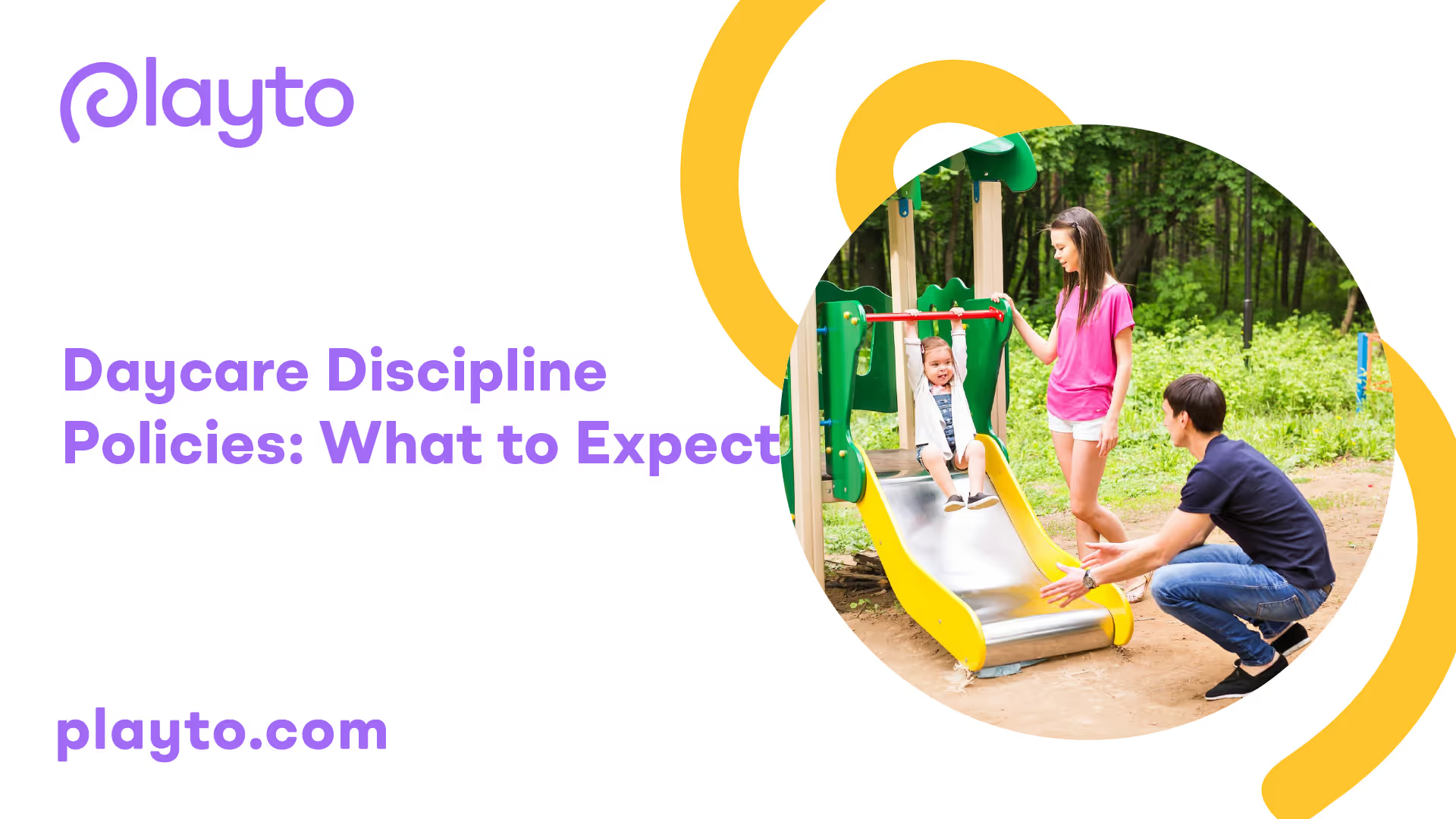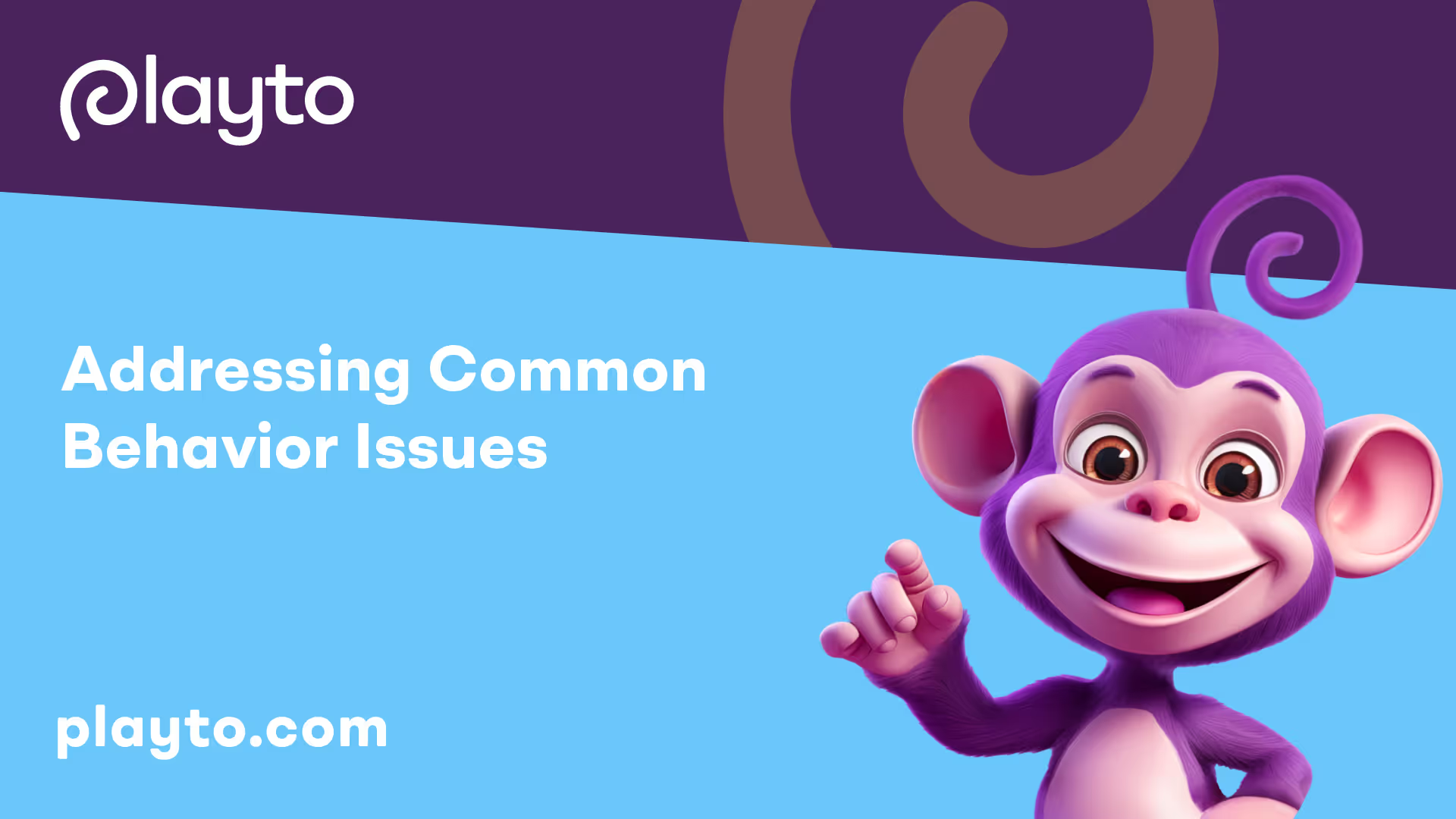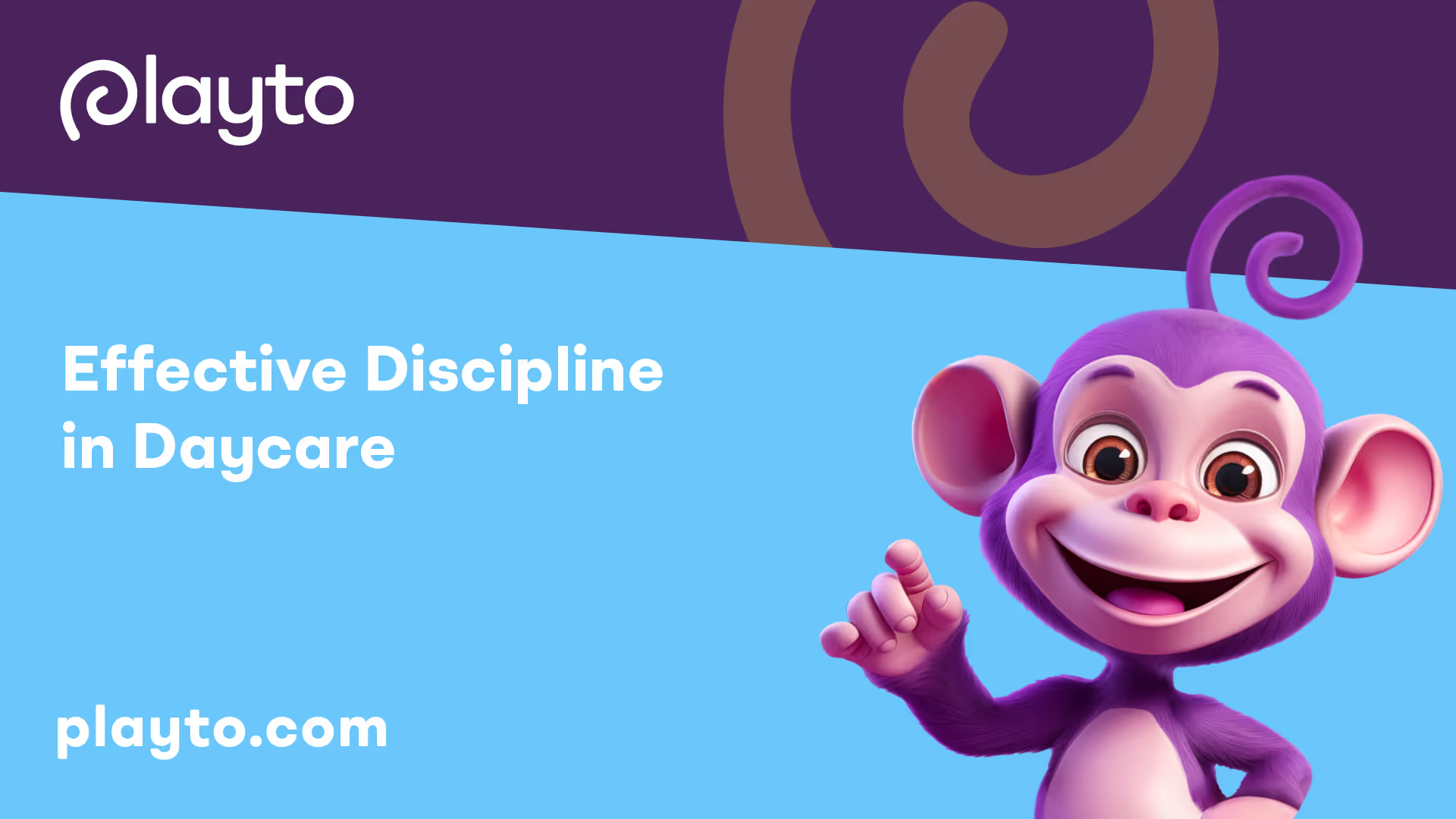Strategies for Positive Discipline
When it comes to daycare discipline, child care providers face the challenge of guiding children's behavior in a positive and effective manner. By choosing and implementing appropriate discipline practices, providers can encourage positive behavior, prevent misbehavior, and manage any misbehavior that may arise. In this section, we will explore two key strategies for positive discipline: anticipating misbehavior and utilizing creative discipline techniques.

Anticipating Misbehavior
Anticipating and eliminating opportunities for misbehavior is an essential step in guiding young children's behavior in a daycare setting. By being proactive, child care providers can create an environment that minimizes the likelihood of challenging behaviors. This involves establishing clear behavioral expectations and setting up the physical environment in a way that supports positive behavior.
For example, if a child tends to become restless during circle time, the provider can implement strategies to keep the child engaged, such as incorporating movement activities or providing fidget toys. By recognizing and addressing potential triggers for misbehavior, child care providers can help children stay focused and prevent challenging behaviors from occurring.
Creative Discipline Techniques
Child care providers require creative strategies to manage and redirect children who may not always follow the rules. There are various approaches and techniques available to address common behavior problems in a group child care setting. It's important to note that discipline in daycare should focus on maintaining a positive and respectful environment, and should never involve physical punishment, harsh language, shame, or degradation.
Some effective discipline techniques used in daycare settings include:
- Redirection: When a child engages in inappropriate behavior, redirecting their attention to a more appropriate activity can be an effective technique. For example, if a child is throwing toys, the provider can redirect their attention to a different toy or activity that is more suitable.
- Positive reinforcement: Acknowledging and praising positive behavior can motivate children to continue exhibiting those behaviors. Offering verbal praise, stickers, or other small rewards can reinforce positive choices and encourage children to make better decisions in the future.
- Time-out: If a child consistently engages in disruptive or aggressive behavior, a brief time-out may be used as a consequence. During this time, the child is given an opportunity to calm down and reflect on their actions. Time-outs should be used sparingly and implemented in a positive and supportive manner.
- Logical consequences: Logical consequences are directly related to the child's behavior. For example, if a child refuses to clean up their toys, they may lose the privilege of playing with those toys for a short period of time. Logical consequences help children understand the connection between their actions and the resulting consequences.
By using these creative discipline techniques, child care providers can guide children's behavior in a positive and respectful manner, promoting a harmonious and supportive environment within the daycare setting.
In the next section, we will explore how effective discipline in daycare involves balancing positive behavior and managing rule-breaking.
Addressing Common Behavior Issues
When it comes to daycare discipline, child care providers often encounter common behavior issues that require attention and management. Two of these challenges include biting incidents and challenging preschool behaviors.

Biting Incidents
Biting is a behavior that can be seen in some children attending daycare. While it can be a distressing issue for both children and caregivers, it's important to approach it with understanding and effective strategies. According to the eXtension Alliance for Better Child Care, biting is highlighted as one of the most challenging issues faced by many child care providers.
To address biting incidents, daycare providers should consider the following strategies:
- Understanding the reasons: Biting can occur due to various factors such as teething, communication difficulties, frustration, or seeking attention. By identifying the underlying cause, caregivers can respond appropriately.
- Supervision and prevention: Close supervision can help caregivers anticipate situations in which biting might occur, allowing them to intervene proactively. By closely monitoring interactions and redirecting children's attention, caregivers can prevent biting incidents.
- Teaching alternative behaviors: Encouraging children to use words to express their needs and feelings can help reduce the likelihood of biting. Caregivers can model appropriate communication and provide gentle guidance to help children learn alternative ways of expressing themselves.
By implementing these strategies and maintaining open communication with parents, daycare providers can effectively address biting incidents and promote positive behavior.
Challenging Preschool Behaviors
Preschool-aged children often exhibit challenging behaviors as they navigate their development and learn to interact with their environment and peers. These behaviors can include interrupting, temper tantrums, or snatching items from others. According to CCEI Online, it's important for caregivers to approach these behaviors with patience and effective techniques.
To address challenging preschool behaviors, daycare providers can consider the following strategies:
- Remaining calm: Staying calm and composed can help de-escalate challenging situations and model appropriate behavior for children.
- Changing the setting: Sometimes, a change in the environment or activity can redirect a child's attention and help them regulate their emotions.
- Teaching alternative responses: Providing children with alternative ways to express their thoughts and emotions can equip them with more constructive behavior choices.
- Practicing positive reinforcement: Recognizing and reinforcing positive behaviors can motivate children to engage in more desirable actions.
- Informing parents: Consistent communication with parents about recurring challenges can help create a collaborative approach in addressing and managing challenging behaviors.
Daycare providers can also benefit from additional resources and support to effectively handle challenging behaviors. Mobile Crisis Intervention Services, The Center of Excellence for Infant and Early Childhood Mental Health Consultation (CoE for IECMHC), and online courses that cover topics like responding to challenging behaviors and positive guidance can provide valuable insights and strategies.
By employing these approaches and utilizing available resources, daycare providers can create a supportive environment for addressing challenging behaviors in preschool-aged children and promoting positive and healthy social interactions.
Effective Discipline in Daycare
Ensuring a safe and respectful environment in daycare centers requires effective discipline strategies. Daycare providers play a crucial role in balancing positive behavior reinforcement and managing rule-breaking incidents.

Balancing Positive Behavior
Creating a positive and supportive environment is key to encouraging good behavior in daycare settings. Daycare providers act as role models for children, prioritizing positive reinforcement to promote desired behaviors. By rewarding positive behavior with verbal praise or small rewards like extra playtime, children are motivated to continue displaying positive conduct [3].
Daycare providers should establish clear expectations and rules from the beginning, ensuring children understand what is expected of them. By setting consistent boundaries and consistently reinforcing positive behavior, providers can create a positive atmosphere where children feel respected and valued.
Managing Rule-Breaking
In a group daycare setting, it's important for providers to address rule-breaking incidents appropriately. When managing rule-breaking behavior, daycare providers should prioritize a calm and constructive approach. It is essential to avoid physical punishment, harsh language, shame, or degradation.
When a child breaks a rule, daycare providers should address the behavior privately to avoid humiliation. They can use redirection techniques or provide alternative activities to guide the child toward more appropriate behavior. By using positive and clear communication, providers can help children understand the consequences of their actions and encourage them to make better choices.
To ensure consistent discipline, daycare centers should establish clear rules and policies with parents from the beginning. This helps prevent surprises or complaints regarding discipline methods for rule-breaking incidents or conflicts among children.
By maintaining cheerful adult leadership and setting a tone of mutual respect, daycare providers can effectively maintain discipline in a group of small children. It's important to note that physical discipline, such as spanking or hitting, should never be a part of a daycare's approach to disciplining children.
Remember, effective discipline in daycare involves creating a positive environment, reinforcing positive behavior, and addressing rule-breaking incidents with calmness, respect, and clear communication. By implementing these strategies, daycare providers can foster a safe and nurturing atmosphere for children to learn and grow.
Parent Involvement in Discipline
When it comes to daycare discipline policies, it is important to establish a collaborative approach between daycare providers and parents. Parent involvement plays a crucial role in ensuring consistency and reinforcing positive behaviors. In this section, we will discuss two key aspects of parent involvement in discipline: establishing clear policies and addressing negative behaviors.
Establishing Clear Policies
Daycare providers should establish clear rules and policies with parents from the beginning to avoid surprises or complaints regarding discipline methods for children in case of rule-breaking or fighting. By setting expectations upfront, both parents and daycare providers can work together to create a consistent disciplinary approach.
Clear policies should cover various aspects, including behavior expectations, consequences for rule-breaking, and the steps involved in addressing negative behaviors. Open communication between parents and daycare providers is essential to ensure that both parties understand and agree upon these policies. This collaboration helps create a supportive environment that promotes positive behavior and consistency in discipline.
For more information on related topics, you can refer to our articles on building relationships with daycare staff, daycare field trips: safety and educational value, daycare staff qualifications and training and daycare policies on field trip permissions.
Addressing Negative Behaviors
It is important for daycare providers and parents to address negative behaviors promptly and effectively. When negative behaviors occur, it is crucial to involve parents in the process. Discussing negative behaviors with parents can be awkward, but it is essential to address such issues. Parents should be involved in determining the cause of negative behaviors and deciding on appropriate disciplinary actions, which can help reduce these behaviors over time.
By involving parents in the disciplinary process, daycare providers can gain valuable insights into the child's behavior patterns and develop strategies to address them effectively. This collaborative approach promotes consistency between the daycare setting and the child's home environment, reinforcing positive behaviors and ensuring a unified approach to discipline.
Effective communication between daycare providers and parents is crucial in addressing negative behaviors. It is important to approach these discussions with empathy, understanding, and a focus on finding solutions that benefit the child's development. By working together, parents and daycare providers can provide consistent guidance and support to help children navigate and learn from their negative behaviors.
By establishing clear policies and involving parents in the disciplinary process, daycare providers can create a cohesive approach to discipline. This collaboration promotes consistency, reinforces positive behaviors, and ensures that children receive the necessary guidance and support to learn and grow. Effective discipline is a shared responsibility between daycare providers and parents, working together to create a nurturing and respectful environment for children to thrive.
Communication Between Providers and Parents
Effective communication between daycare providers and parents is vital for maintaining a positive and productive relationship. Clear and open lines of communication foster trust, understanding, and collaboration, ultimately benefiting the child's development and well-being. In this section, we will explore two key aspects of communication: setting expectations and handling difficult conversations.
Setting Expectations
Establishing clear expectations from the start is essential for effective communication between daycare providers and parents. This includes outlining the daycare's discipline policies, daily routines, and any specific guidelines or requirements. By clearly communicating these expectations, parents can feel confident that their child will be cared for in a manner aligned with their values and preferences.
Regular updates and progress reports are another important aspect of setting expectations. Providing parents with information about their child's activities, milestones, and achievements helps them feel connected to their child's experiences at the daycare center. Sharing photos and videos of daily activities can also create a sense of involvement and reassurance [4].
Handling Difficult Conversations
Occasionally, difficult conversations may arise between daycare providers and parents. It is crucial to approach these conversations with respect, empathy, and professionalism. Active listening, seeking to understand the parent's perspective, and demonstrating empathy can help create a supportive environment for resolving conflicts and finding common ground.
When handling difficult conversations, it is important to focus on problem-solving rather than placing blame. Collaborative problem-solving encourages parents and providers to work together to find solutions that meet the best interests of the child. By maintaining a calm and respectful demeanor, daycare providers can help create a positive and constructive atmosphere for these conversations [4].
To facilitate effective communication during difficult conversations, daycare providers can:
- Choose an appropriate time and place for the conversation, ensuring privacy and minimizing distractions.
- Use clear and concise language to express concerns or feedback.
- Be open to listening to the parent's perspective and validate their feelings.
- Seek common ground and explore potential solutions together.
- Follow up with any agreed-upon actions or next steps.
By approaching difficult conversations with professionalism, empathy, and a focus on problem-solving, daycare providers can maintain strong and trusting relationships with parents. These conversations, when handled effectively, can lead to improved outcomes for the child and a more harmonious daycare experience for all involved parties.
In the next section, we will explore strategies for ensuring safe and respectful discipline in daycare, including setting clear expectations and maintaining a safe environment for children.
Ensuring Safe and Respectful Discipline
When it comes to daycare discipline policies, it is crucial to prioritize the safety and well-being of the children. Discipline should always be administered in a safe and respectful manner, fostering an environment of learning and growth. Let's explore two key aspects of ensuring safe and respectful discipline: clear expectations and safety and redirection.
Clear Expectations
Maintaining clear behavioral expectations is essential for effective discipline in a daycare setting. When children are aware of the expectations, they have a clearer understanding of how to behave [2]. Daycare providers should clearly communicate the rules and guidelines to the children, using age-appropriate language and methods.
By setting clear expectations, children are more likely to understand and follow the rules. This helps prevent misunderstandings and reduces the likelihood of challenging behaviors. It is important for daycare providers to consistently reinforce these expectations and address any deviations promptly and constructively.
Safety and Redirection
In a daycare environment, ensuring the safety of the children is of utmost importance. Discipline should primarily focus on maintaining a safe and secure environment for all children [2]. For babies and young toddlers, discipline is more about redirection and providing support in safely navigating their emotions and impulses.
Daycare providers should be attentive to potential safety concerns and actively redirect children's behavior towards appropriate alternatives. For example, if a child is engaging in a potentially dangerous activity, such as climbing on furniture, the provider can redirect their attention to a safe and engaging activity, encouraging positive behavior.
By prioritizing safety and redirection, daycare providers can discipline children effectively without resorting to harsh or punitive measures. It is important to remember that spanking or hitting, harsh language, shame, and degradation should never be a part of a daycare's approach to disciplining children.
By maintaining clear expectations and prioritizing safety and redirection, daycare providers can create a positive and respectful environment for children to learn and grow. Effective discipline strategies help children develop self-discipline, empathy, and problem-solving skills, contributing to their overall development and well-being.
